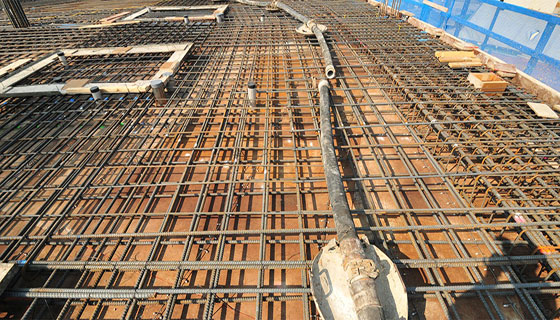In this civil engineering article, you will get the details about the role of a contractor and the liabilities of him.
Normally, a contractor has to plan, implement, supervise, examine and direct a building construction project from beginning to completion devoid of the scope of the project. The contractor verifies that the project abides by all the specifications as provided in the contract documents.
1. Role Of A Contractor In Project Planning
The project management team develops a master schedule for the project depending on the completion date of the project.
To finish the project on scheduled time according to master schedule, the contractor has to take the following responsibilities :
• Plan for all the important project development and execution details beforehand.
• Specify and evaluate different project issues like the necessary materials, equipment, and personal requirements.
• Anticipate any probable changes.
• Execution of a trustworthy communication strategy between all concerned stakeholders.
• Focus on all legal and regulatory issues and requirements.
• Draft an efficient safety policy.
2. Role Of A Contractor In Project Management
Since the contractor is responsible to finish the project on scheduled time, he should bear the following responsibilities in project management.
• Making funds to accomplish construction tasks.
• Organize the materials for different tasks as projected.
• Arrange necessary construction equipments.
• Appoint required subcontractors to finish the job.
• Submit bills for the completed tasks as mentioned in the contract.
3. Role Of A Contractor In Project Monitoring
To finish the project according to specifications and minimize different issues in the project, a contractor has to take a vital role in project monitoring. He has to perform the following key responsibilities in this field.
• Track time schedule.
• Apply cost-effective methods.
• Check work quality.
• Execution of materials management system.
• Monitor problems associated with safety.
4. Role Of A Contractor In Legal And Regulatory Issues
The contractor also plays an important role in legal and regulatory issues. Besides, he has to check that the project isn’t breaching any legal terms.
• Ensure that the project is in accordance with all the required legal and regulatory issues.
• Obtaining all the required permits prior to progressing with the project.
• Paying or making sure to disburse all the fees and taxes essential to finish the project.
5. Role Of A Contractor In Health And Safety Issues
The contractor has to undertake the following liabilities for health and safety issues.
• Maintain health and safety in the workplace.
• Execute a safety method and standards for the project.
• Apply the proper safety equipment in the project.
• Execution of well organized risk management and communication strategies.
• Provide safety awareness among workers.
Read more

~~~~~~~~~~~~~~~~~~~~~~~~
Published By
Rajib Dey
www.constructioncost.co
~~~~~~~~~~~~~~~~~~~~~~~~
Normally, a contractor has to plan, implement, supervise, examine and direct a building construction project from beginning to completion devoid of the scope of the project. The contractor verifies that the project abides by all the specifications as provided in the contract documents.
1. Role Of A Contractor In Project Planning
The project management team develops a master schedule for the project depending on the completion date of the project.
To finish the project on scheduled time according to master schedule, the contractor has to take the following responsibilities :
• Plan for all the important project development and execution details beforehand.
• Specify and evaluate different project issues like the necessary materials, equipment, and personal requirements.
• Anticipate any probable changes.
• Execution of a trustworthy communication strategy between all concerned stakeholders.
• Focus on all legal and regulatory issues and requirements.
• Draft an efficient safety policy.
2. Role Of A Contractor In Project Management
Since the contractor is responsible to finish the project on scheduled time, he should bear the following responsibilities in project management.
• Making funds to accomplish construction tasks.
• Organize the materials for different tasks as projected.
• Arrange necessary construction equipments.
• Appoint required subcontractors to finish the job.
• Submit bills for the completed tasks as mentioned in the contract.
3. Role Of A Contractor In Project Monitoring
To finish the project according to specifications and minimize different issues in the project, a contractor has to take a vital role in project monitoring. He has to perform the following key responsibilities in this field.
• Track time schedule.
• Apply cost-effective methods.
• Check work quality.
• Execution of materials management system.
• Monitor problems associated with safety.
4. Role Of A Contractor In Legal And Regulatory Issues
The contractor also plays an important role in legal and regulatory issues. Besides, he has to check that the project isn’t breaching any legal terms.
• Ensure that the project is in accordance with all the required legal and regulatory issues.
• Obtaining all the required permits prior to progressing with the project.
• Paying or making sure to disburse all the fees and taxes essential to finish the project.
5. Role Of A Contractor In Health And Safety Issues
The contractor has to undertake the following liabilities for health and safety issues.
• Maintain health and safety in the workplace.
• Execute a safety method and standards for the project.
• Apply the proper safety equipment in the project.
• Execution of well organized risk management and communication strategies.
• Provide safety awareness among workers.
Read more

~~~~~~~~~~~~~~~~~~~~~~~~
Published By
Rajib Dey
www.constructioncost.co
~~~~~~~~~~~~~~~~~~~~~~~~

